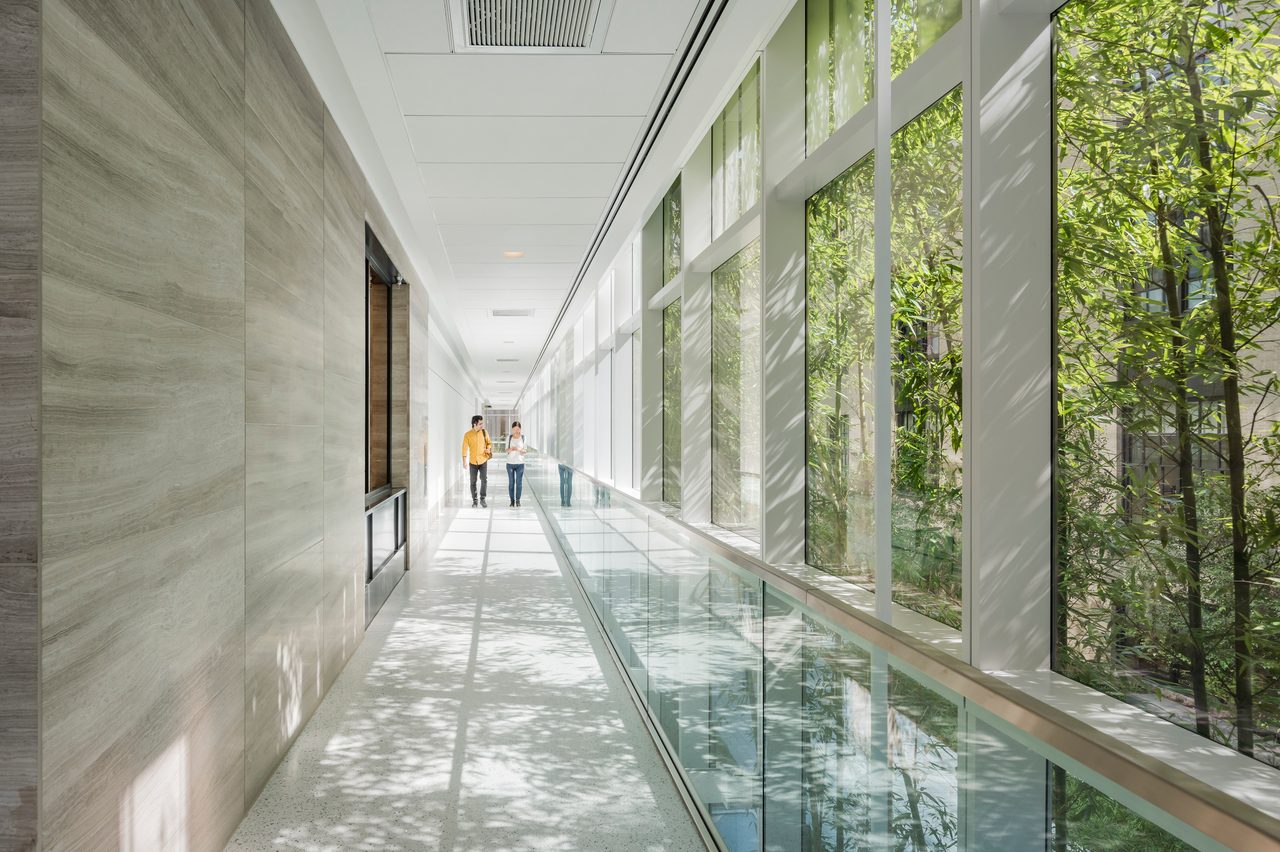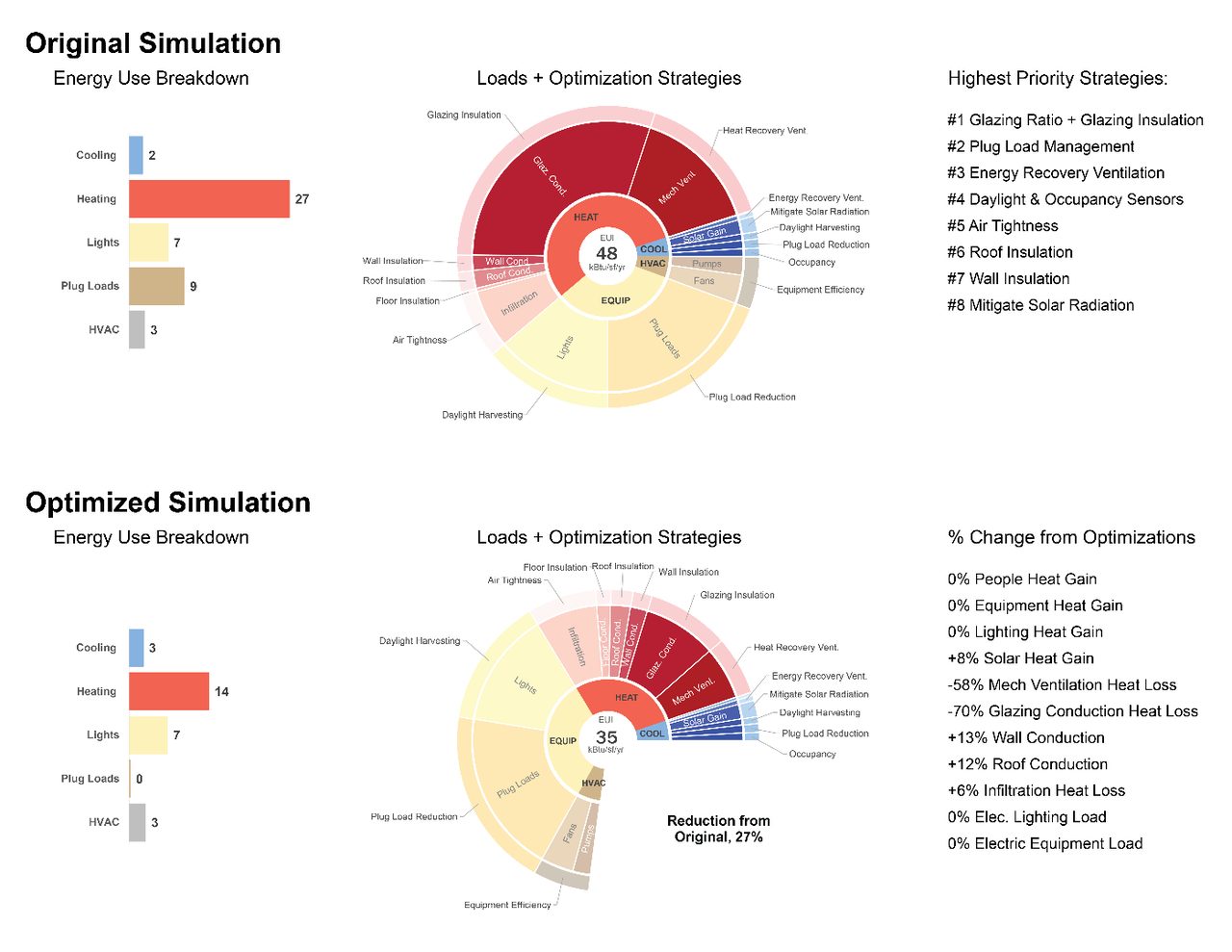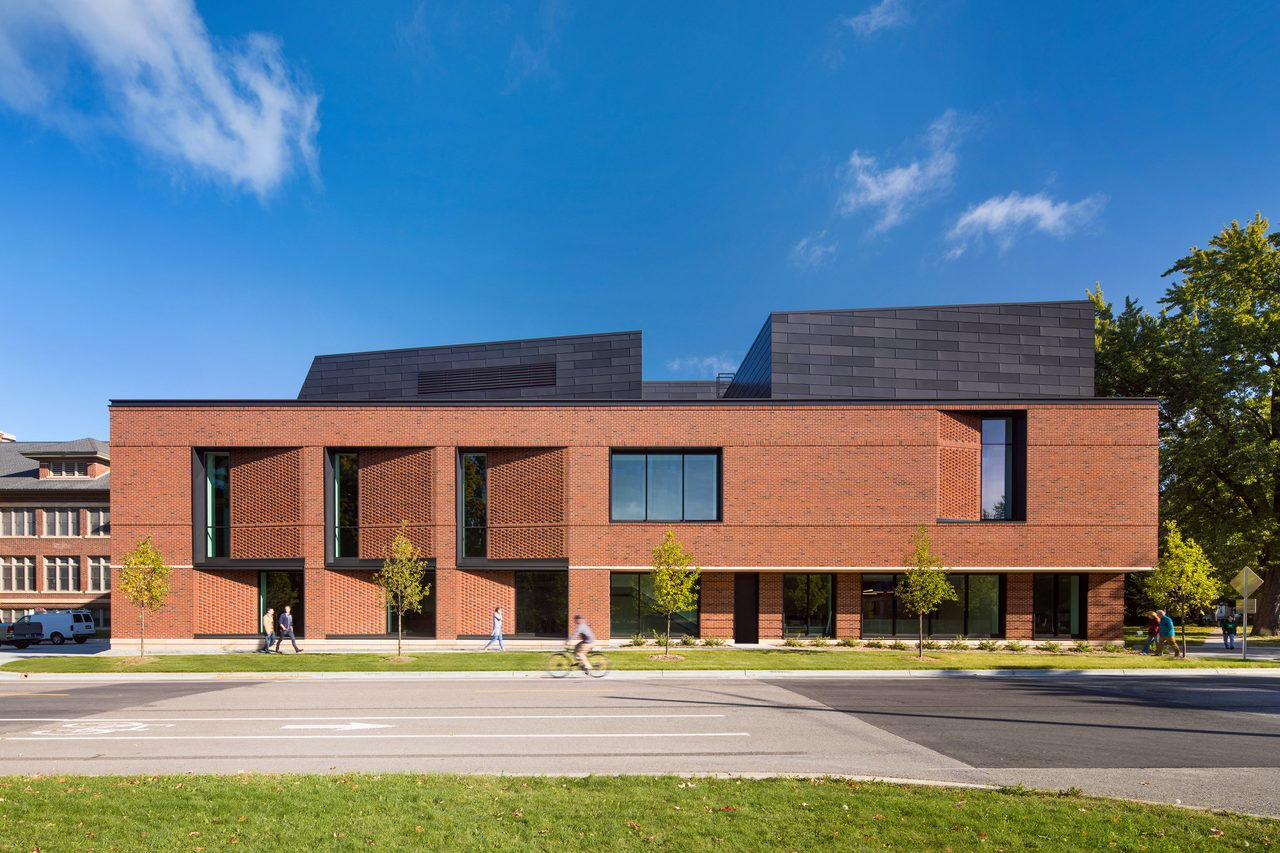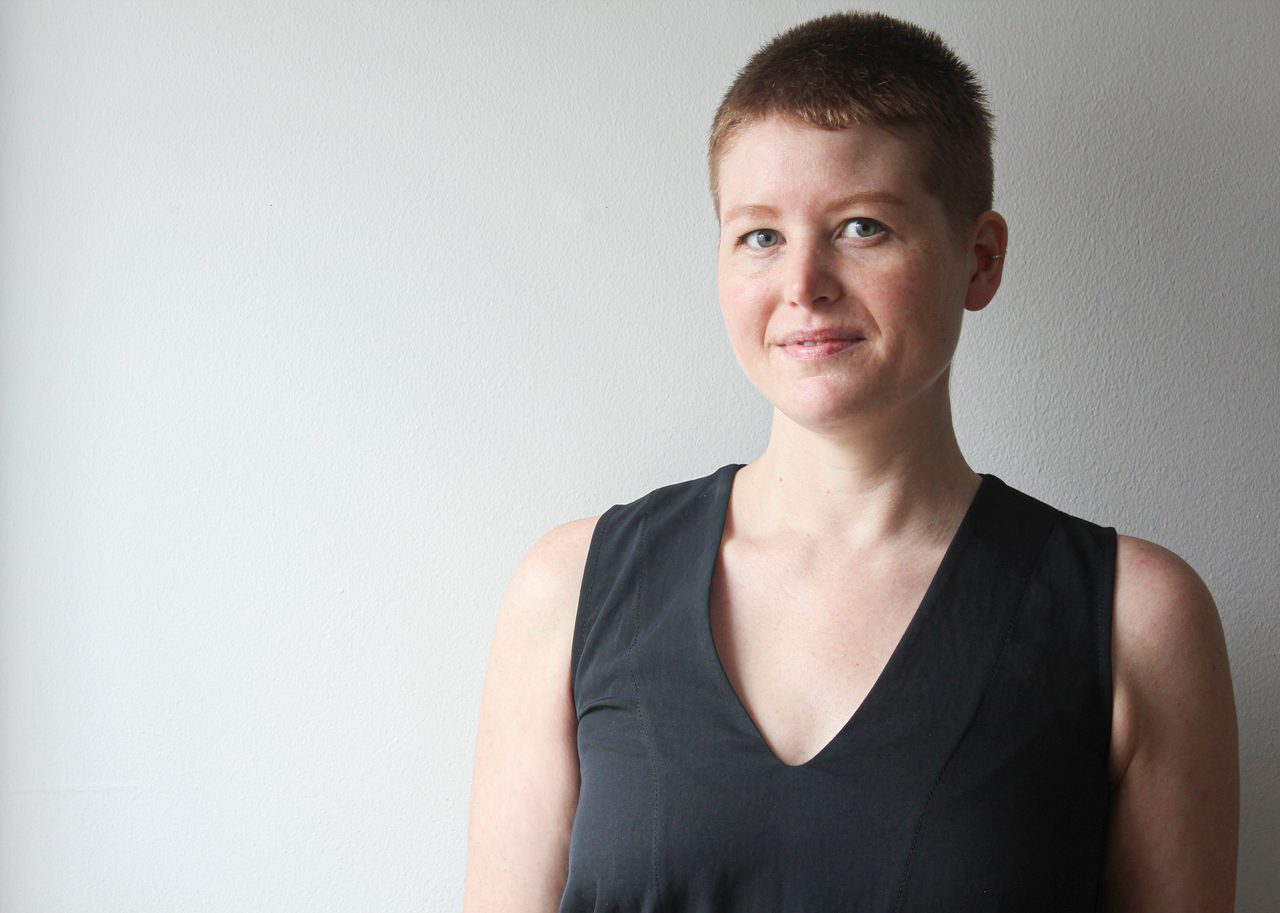

feature
Following the Script to Early Energy Analysis
There is still too much of a disconnect between what is being learned through the analysis process and what translates to the design team during critical decision-making phases.
In the American Institute of Architects’ (AIAs') most recent “By the Numbers” 2030 Commitment report, the organization summarizes that while 77.4% of reported whole-building gross square feet (GSF) by signatories in 2020 has been energy-modeled, only 4.3% of this whole-building GSF meets the 80% predicted energy use intensity (pEUI) reduction target for 2020. In fact, the overall recorded pEUI reduction is only 51.3% for all projects recorded in the past year, which represents only marginal improvements over the energy performance required by building codes. While there seems to be consensus in the architecture and engineering industry that energy modeling has an important role in the path to high-performance buildings, it's clear from these numbers that the current methodologies for applying energy analysis in the design process need dramatic improvement in order to meet the industry's urgent call for climate response.
HGA, a large interdisciplinary firm, in collaboration with Cause, a sustainability consultancy, is striving to change this picture through the development and adoption of an energy analysis process that allows architects to take the lead in the early phases of design, opening a path for greater interdisciplinary dialogue about key sustainability strategies much earlier in the design process than is currently typical, and creating a common understanding of the factors that influence building performance across the entire project team.
Defining Early Energy Analysis
It has long been understood that to design energy-efficient projects that meet high-performance building goals, it is important to integrate energy analysis early in the design process. Too often, however, energy analysis still occurs too late in the design process to provide its full benefits. Once decisions regarding programming, building massing, envelope assemblies, and early mechanical system designs have been determined without an overlay of energy analysis feedback, many projects miss out on critical information that could have helped to inform these decisions.
Because energy modeling originated as a type of analysis performed by mechanical, electrical, and plumbing (MEP) engineers to inform system sizing, this process traditionally fit later in the design process, when the design was complete enough to make detailed decisions about HVAC systems. We now commonly use energy models and other types of environmental analysis to study a wider range of performance factors, such as understanding the impact of high-performance envelope assemblies, quality of space, and building operations. However, as illustrated in the aforementioned AIA report, there is still too much of a disconnect between what is being learned through the analysis process and what translates to the design team during critical decision-making phases. In part, this disconnect can be attributed to the reality that the majority of energy analysis still does not directly involve the team members who own the majority of early design decisions — architects.
In addition, we believe we are often not asking the most relevant questions of energy analysis in the early phases of design to make it most useful. A key question that is too often left unanswered is: “What are the highest priority optimization strategies for my specific project in its specific climate? And, how do we prioritize our effort to have the greatest impact with the least cost?”
Exploring which design characteristics contribute most to total energy consumption on a specific project allows design teams to identify the optimization strategies that will have the highest impact on energy reductions and to place less focus on strategies that make little difference. For example, an early energy analysis could reveal that adding external shading or increasing the thermal performance of the walls has much less impact than increasing the performance of fenestration or the dramatic energy reductions possible with advanced mechanical systems, such as heat pump technologies.
Understanding this potential early in design starts a dialogue between the architects and the appropriate specialists, such as MEP engineers or envelope consultants, to explore advanced system options or find the right balance for envelope assemblies and incorporate these assumptions into the early budget, increasing the ability to implement them before these design decisions are set. This creates an informed, collaborative design process to explore energy-reduction strategies at a high level, sparking conversation with various team members and engineers much earlier in design than is typical.
Introducing the ENERGY.script
While there has been an explosion of new energy analysis software geared for architectural use in the last decade, it was found through surveying HGA design teams that what was really needed was to develop and communicate a process for architects to follow to execute an accurate energy analysis quickly, in early design.
Rather than reinvent the wheel and create new energy analysis software that could address the key energy analysis questions identified, HGA and Cause developed a customized early energy analysis workflow called the ENERGY.script utilizing open-sourced Grasshopper software: Ladybug and Honeybee (developed by Ladybug Tools), and Conduit (developed by Proving Ground) to create a step-by-step energy analysis pathway that can be used entirely within the Rhino design environment during planning and schematic design phases.
Ladybug and Honeybee consist of a series of open-source environmental analysis components, which allow a user to set up and run a whole-building energy analysis, utilizing OpenStudio and EnergyPlus as the simulation engine, entirely within the Grasshopper environment. Ladybug and Honeybee provide the ability to customize the energy model beyond the capabilities of most early energy analysis software. However, because using these tools requires a user to create an energy model entirely from scratch using visual scripting components, they are most often used by sustainability specialists and analysts.
The intent of the ENERGY.script is to create an easy, accessible, and quick process for architecture teams to use this powerful existing environmental design software without additional assistance.
The ENERGY.script takes 3D architectural geometry from Rhino to create a whole-building energy model directly in Grasshopper. Design teams create their project geometry as a representative mass in Rhino and organize that massing into major program types. Next, when an architectural user opens the ENERGY.script in the Grasshopper environment, they are guided through a step-by-step process for creating an accurate energy model — selecting the climate file, assigning program assumptions to the massing model, determining envelope specifications, adding surrounding context, and selecting a mechanical system to run an EnergyPlus simulation. After the simulation is complete, customized visual graphics from the EnergyPlus simulation are displayed live in the Rhino environment (using Conduit), which design teams can use to interpret key energy analysis results. The graphics help in identifying the highest priority optimization strategies and understanding the energy breakdown and pEUI of a project.
The most important part of running the first “original” simulation is to give the design team an idea of which optimization strategies will have the greatest impact. The results from an example project are shown in Figure 1. On the far left is a bar chart illustrating the major energy use breakdowns. The center energy wheel takes these results a step further by illustrating the specific loads that contribute to heating and cooling. The largest slices of the energy wheel are the loads that contribute most greatly to overall energy use, allowing the design team to understand which strategies will be most impactful to optimize.
In Figure 1, the design team discovered from the original simulation that the highest-priority strategies for energy-use reductions were reducing heat loss through the glazing units, reducing electric plug loads, and incorporating energy recovery ventilation.

FIGURE 1: The most important part of running the first “original” simulation is to give the design team an idea of which optimization strategies will have the greatest impact. The results from an example project are shown here.
Image courtesy of HGA and Cause
From these findings, project teams can then explore the impact of implementing these strategies and others (orientation, envelope performance, HVAC system type) in the optimization section of the ENERGY.script and run a new EnergyPlus simulation to instantly see the impact of the design changes. In Figure 1, the design team tested the impact of optimizing the highest-priority strategy and increased the performance of glazing from a code level (U-0.34) to U-0.18. This one change resulted in a 27% reduction in total annual energy use, demonstrating the value of being able to make an informed decision about what building factors to prioritize. They were also able to identify that increasing the thermal performance of the wall assemblies above a code level had comparatively little impact on overall energy performance and were able to eliminate that as a high-priority strategy to invest in on this project.
The ENERGY.script is intended to be primarily used by architects with the objective that it can help facilitate conversations with engineers and specialist groups so these critical design conversations occur earlier in the design process. Once the design team has explored both the original energy simulation and one or more optimizations and targets are established, it is encouraged to reach out to specialists in the field of its major energy drivers to start a technical conversation on how to reduce those loads.
As project teams begin the design development phase, they are encouraged to transition to energy analysis tools that can model more detailed HVAC systems or expand the breadth of the analysis to study specific optimizations, such as daylight simulation, envelope analysis, or façade optimization in more depth.

FIGURE 2: Daylighting and envelope highlighted at the Massachusetts Institute of Technology’s MIT.nano building in Cambridge, Massachusetts.
Image courtesy of HGA, photo credit ©Anton Grassl Photography
Addressing Existing Limitations
There are many early energy analysis software options available to architects today, and these tools are often very useful for exploring early energy analysis. HGA chose to use Ladybug Tools to develop a custom Grasshopper workflow for the creation of the ENERGY.script to address some of the current limitations of other software tools.

FIGURE 3: Lower window-to-wall ratio buildings at the Performing Arts Center addition at St Bernard College in St Cloud, Minnesota. Image courtesy of HGA/©Albert Vecerka/Esto
Here are a few advantages of this process:
Full customization of unique program types and building loads
Many early energy analysis software tools have limited options for space types or building program assumptions (equipment, lighting, occupancy load, etc.). Being able to model unique space types and specific internal loads of the building, even in early design, is critical to provide an accurate energy model.
- The Solution: A primary advantage of creating a custom Grasshopper script with Ladybug Tools is the ability to customize the tool to HGA project types and standards. We were able to create a library of specific program types that are not commonly included in early energy analysis tools, such as performing and visual arts centers, museums, and land ports of entry. We leveraged knowledge from designers and engineers at HGA to create occupancy schedules and set lighting power and equipment power densities for each of the different room types found in these types of buildings. Additionally, we worked with mechanical engineers at the firm to select a baseline mechanical system and some high-performance systems that align with systems typically specified at the firm. These assumptions were all built into the background of the ENERGY.script, allowing for design teams to simply select the space types applicable to their projects with the assurance the loads would match what is typical on HGA projects.
Clear and engaging graphic output
Graphics provided to help interpret energy model results often are not visually engaging or clear enough to direct next steps for the design team.
- The Solution: Customized graphic output and illustrations were developed with the input of HGA design teams to help users interpret key aspects of the energy analysis results with a focus on providing clear guidance for which energy optimization strategies will be most impactful. Every project type and regional location requires a unique set of strategies to reduce energy use, and the ENERGY.script helps architects build fluency in these methods.
An understandable pathway for exploring optimizations
While options are provided in most software to explore a variety of building optimizations (envelope changes, mechanical system changes, operations), the programs lack a clear process design teams can follow to explore these optimizations in an informed and strategic way. This often leads to a guess-and-check method of exploring optimizations. This is especially frustrating to users who are new to energy analysis and often leads to the abandonment of the tools because the strategies they expected to make an impact do not, and other possible strategies are unclear.
- The Solution: The step-by-step process and graphic results guide the design team through a process of setting up both an original energy analysis and an optimized energy analysis, allowing the design team to create the energy analysis independently and, with confidence, ensure it follows a vetted process. Graphic output is designed to provide architects with a list of optimization priorities — a starting point for exploring the most impactful strategies first and then instantly seeing a side-by-side comparison.
Energy analysis process is entirely in the design environment
Most early energy analysis software requires designers to use a separate web application to perform the energy analysis after geometry is created, taking the process out of the 3D modeling environment and disconnecting it from future project geometry changes.
- The Solution: The entire process of setting up and running the energy analysis within the ENERGY.script is done directly within the native design environment, Rhino, and Grasshopper. It does not require the design team to export geometry to a separate web application and get to know an unfamiliar interface.
Cost
Almost all current early energy analysis software comes at a cost to design teams, usually ranging from $1,500-$2,000 per seat. This limits the ability for a design firm to provide open access to all employees and scale the application of energy analysis on all projects.
- The Solution: By utilizing open-source software, the investment in using this tool can be focused entirely on current and future development. The use of the ENERGY.script can be scaled across the firm affordably, and improvements can continue to be made based on user feedback.

FIGURE 4: A façade with adjustments to minimize energy gain shown at Carleton College’s Weitz Center for the Arts in Northfield, Minnesota.
Image courtesy of HGA, photo credit ©Albert Vecerka/Esto
Broader Applications
This early energy analysis workflow is the first in what HGA hopes will be a full library of customized template Grasshopper workflows that can support the design process and put the power of environmental analysis in the hands of design teams. Future potential workflows include climate visualization, building form optimization, early daylight analysis, thermal comfort analysis, renewable energy analysis, and façade optimization.
In addition, custom components can be developed through Python coding to expand the capabilities of the ENERGY.script or other workflows as needed. The open-source nature of this workflow leaves a lot of room for expansion and improvements as HGA continues to test out the tool and refine it.
While creating custom templates for common environmental design workflows is typical among sustainability consultants, it's still new to many architectural designers. The intent of the ENERGY.script workflow is to vet a replicable process for design teams who have little or no previous experience doing energy analysis — and then to connect the power of these customizable tools to a broader population of architectural design teams.
The ENERGY.script encourages interdisciplinary design and construction teams to engage with specialists earlier which enables design teams to better integrate their input and achieve project goals, whether those goals are focused on energy efficiency and carbon reductions, occupant well-being, or other sustainability and adaptation goals.
Molly Eagen, AIA, CPHC, LEED AP BD+C
Molly Eagen is founder of Cause, a sustainable design consultancy focused on connecting creative design process with the power of building performance information. Cause develops close collaboration with clients, the architectural team, and diverse disciplines to identify the unique sustainable design opportunities of each project and develop solutions which minimize environmental impact and enhance human experience and well-being through design.

Elizabeth LeRiche
Elizabeth LeRiche is a sustainability specialist at HGA. As a founding signatory of AIA2030 and a signatory of SE2050, HGA is committed to meeting clients’ sustainability goals and challenging our industry. HGA has developed an integrated approach to designing a sustainable future that yields inventive, efficient, and humane responses to the profound challenges of our time.
